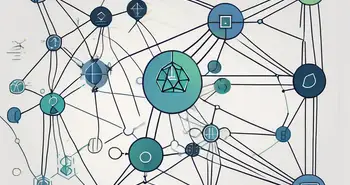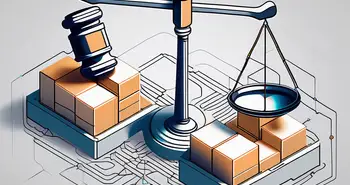The Consensus Mechanism Beginner’s Guide

Consensus mechanism is a fundamental concept in the world of blockchain technology. It ensures that all participants in a network agree on the validity of transactions and the order in which they are added to the blockchain. In this comprehensive guide, I will take you on a journey of understanding consensus mechanisms, their types, and their significance in the blockchain ecosystem.
Understanding Consensus Mechanism
Consensus mechanism, simply put, is the process by which decentralized systems achieve agreement. In the context of blockchain, it is crucial for maintaining the integrity and trustworthiness of the network. By having a mechanism in place that determines the validity of transaction records, blockchain technology eliminates the need for intermediaries such as banks or governments.
Definition and Importance of Consensus Mechanism
A consensus mechanism is a set of rules and protocols that govern how nodes within a blockchain network reach a consensus or agreement. It ensures that all participants agree on the current state of the ledger and the transactions that have taken place.
But let's dive deeper into the importance of consensus mechanisms. They provide the necessary trust and security required for decentralized systems to function effectively. In a traditional centralized system, trust is placed in a single authority. However, in a decentralized system like blockchain, trust is distributed among multiple participants. Consensus mechanisms ensure that these participants can come to an agreement without relying on a central authority.
The Role of Consensus Mechanism in Blockchain Technology
Consensus mechanisms play a crucial role in the overall functionality of blockchain technology. They enable the creation of a secure and transparent environment where trust is established through algorithmic consensus rather than human intervention. This ensures that transactions are validated and recorded in a way that is verifiable by all participants.
Moreover, consensus mechanisms contribute to the scalability of blockchain networks. As more participants join the network, the consensus mechanism ensures that the system can handle the increased transaction volume without compromising security. This scalability is essential for the widespread adoption of blockchain technology in various industries.
Transparency and immutability are key characteristics of blockchain technology made possible by consensus mechanisms. These mechanisms guarantee that once a transaction is recorded on the blockchain, it cannot be altered or manipulated, providing a high level of security. Additionally, consensus mechanisms also prevent double-spending, a fraudulent activity where a user spends the same cryptocurrency more than once.
In conclusion, consensus mechanisms are the backbone of blockchain technology. They establish trust, ensure security, and enable the decentralized nature of blockchain networks. By understanding the importance and role of consensus mechanisms, we can appreciate the transformative potential of blockchain technology in various sectors.
Types of Consensus Mechanisms
Proof of Work (PoW)
Proof of Work is the original consensus mechanism used by Bitcoin and many other cryptocurrencies. It requires participants, known as miners, to solve complex mathematical puzzles to validate transactions and add new blocks to the blockchain. This process requires significant computational power and energy consumption.
One of the key aspects of Proof of Work is the concept of mining difficulty. As more miners join the network, the puzzles become harder to solve, ensuring a consistent block time. This difficulty adjustment mechanism helps maintain the security and stability of the blockchain by preventing any single entity from controlling the majority of the mining power.
Proof of Stake (PoS)
Proof of Stake is an alternative consensus mechanism that selects validators based on their ownership or stake in the cryptocurrency. In this approach, the more coins a participant holds, the higher their chances of being chosen to validate the next block. This mechanism is energy-efficient compared to Proof of Work.
One of the benefits of Proof of Stake is its potential to reduce centralization within the network. Since validators are chosen based on their stake, participants with a larger investment in the cryptocurrency have a vested interest in maintaining the integrity of the network, as any malicious behavior could devalue their holdings.
Delegated Proof of Stake (DPoS)
Delegated Proof of Stake is a consensus mechanism that introduces a layer of governance to the blockchain network. Participants can delegate their voting power to trusted nodes, known as delegates or witnesses, who are responsible for validating transactions and adding new blocks. DPoS is known for its scalability and efficiency.
DPoS aims to address some of the scalability issues faced by other consensus mechanisms by allowing token holders to vote for delegates who can efficiently validate transactions. This democratic approach to block production helps streamline the decision-making process and can lead to faster transaction confirmations compared to other consensus algorithms.
Byzantine Fault Tolerance (BFT)
Byzantine Fault Tolerance is a consensus mechanism designed to ensure the integrity and reliability of a blockchain network even in the presence of malicious actors. It employs a consensus protocol where a certain number of honest nodes must agree on a proposed transaction for it to be considered valid.
One of the key features of BFT is its ability to withstand Byzantine failures, where nodes in the network may act maliciously or fail unexpectedly. By requiring a threshold of honest nodes to agree on the validity of transactions, BFT can maintain the security of the network and prevent malicious actors from disrupting the consensus process.
Comparing Different Consensus Mechanisms
When comparing different consensus mechanisms, there are several factors to consider, such as efficiency and performance, security aspects, and energy consumption.
Efficiency and Performance
Proof of Work, while robust and secure, is often criticized for its scalability limitations. The high computational requirements and time-consuming process of solving puzzles can lead to slower transaction confirmations. Proof of Stake and Delegated Proof of Stake, on the other hand, offer faster transaction processing times with their energy-efficient approach.
Security Aspects
Proof of Work is highly secure due to the immense computational power required to alter the blockchain's history. However, Proof of Stake and Delegated Proof of Stake provide security through economic incentives, where malicious behavior can result in stakes being forfeited, making them viable alternatives.
Energy Consumption
Proof of Work has been criticized for its significant energy consumption, as it requires powerful hardware and extensive computational resources. Proof of Stake and Delegated Proof of Stake offer greener alternatives, as they do not rely on energy-intensive computations, resulting in a smaller carbon footprint.
The Future of Consensus Mechanisms
The world of consensus mechanisms is constantly evolving, with new approaches being developed to address the limitations of existing ones. As blockchain technology continues to mature, emerging trends such as Hybrid Consensus Mechanisms and Federated Byzantine Agreement hold promise for more efficient and scalable consensus solutions.
Emerging Trends in Consensus Mechanisms
Hybrid Consensus Mechanisms combine the strengths of multiple approaches, such as Proof of Work and Proof of Stake, to achieve a balanced and optimized consensus process. This hybridization aims to tackle scalability issues and improve transaction throughput.
Federated Byzantine Agreement is a consensus mechanism that combines the benefits of Byzantine Fault Tolerance and Proof of Stake. It leverages a selected group of trusted nodes to validate transactions, ensuring consensus while also benefiting from the energy efficiency of Proof of Stake.
Challenges and Solutions in Consensus Mechanisms
Despite their importance and continued development, consensus mechanisms still face challenges. Scalability, energy efficiency, and decentralization are among the key issues that require innovative solutions. Through ongoing research and collaboration, the blockchain community seeks to address these challenges and unlock the full potential of consensus mechanisms.
As an expert in the field, I have witnessed the transformational power of consensus mechanisms in the blockchain ecosystem. One personal story that stands out is my involvement in a project that implemented a Delegated Proof of Stake consensus mechanism. Seeing the network achieve high transaction throughput and scalability while maintaining security was truly remarkable.
FAQ
What is a consensus mechanism?
A consensus mechanism is a set of rules and protocols that enable participants in a blockchain network to agree on the validity and order of transactions.
Why are consensus mechanisms important?
Consensus mechanisms are essential for maintaining the trust, security, and transparency of blockchain networks. They eliminate the need for intermediaries and ensure the integrity of transactions.
What are the types of consensus mechanisms?
- Proof of Work (PoW)
- Proof of Stake (PoS)
- Delegated Proof of Stake (DPoS)
- Byzantine Fault Tolerance (BFT)
Which consensus mechanism is the most secure?
Proof of Work is considered the most secure due to its reliance on computational power and the difficulty of altering the blockchain's history.
Are there more energy-efficient alternatives to Proof of Work?
Yes, Proof of Stake and Delegated Proof of Stake offer energy-efficient alternatives to Proof of Work by reducing the reliance on computational puzzles and using economic incentives to maintain network security.
What are some emerging trends in consensus mechanisms?
Hybrid Consensus Mechanisms and Federated Byzantine Agreement are among the emerging trends in consensus mechanisms. They aim to address scalability and energy efficiency challenges while maintaining security and decentralization.
In conclusion, consensus mechanisms are the backbone of blockchain technology, ensuring the trustworthiness and reliability of decentralized networks. With ongoing research and innovation, we can expect to see further advancements and new approaches that will shape the future of consensus mechanisms in the world of blockchain.
As you've explored the intricacies of consensus mechanisms and their pivotal role in blockchain technology, consider how these innovations can empower your trading experience. Morpher.com stands at the forefront of this transformation, offering a unique trading platform that harnesses the power of blockchain to provide zero fees, infinite liquidity, and a multitude of trading possibilities across diverse asset classes. Embrace the future of investing with Morpher's fractional investing, short selling without interest fees, and up to 10x leverage. Take control of your investments with the safety and autonomy of a non-custodial Morpher Wallet. Ready to revolutionize your trading journey? Sign Up and Get Your Free Sign Up Bonus today and join the Morpher community, where innovation meets investing.

Disclaimer: All investments involve risk, and the past performance of a security, industry, sector, market, financial product, trading strategy, or individual’s trading does not guarantee future results or returns. Investors are fully responsible for any investment decisions they make. Such decisions should be based solely on an evaluation of their financial circumstances, investment objectives, risk tolerance, and liquidity needs. This post does not constitute investment advice.

Painless trading for everyone
Hundreds of markets all in one place - Apple, Bitcoin, Gold, Watches, NFTs, Sneakers and so much more.

Painless trading for everyone
Hundreds of markets all in one place - Apple, Bitcoin, Gold, Watches, NFTs, Sneakers and so much more.









